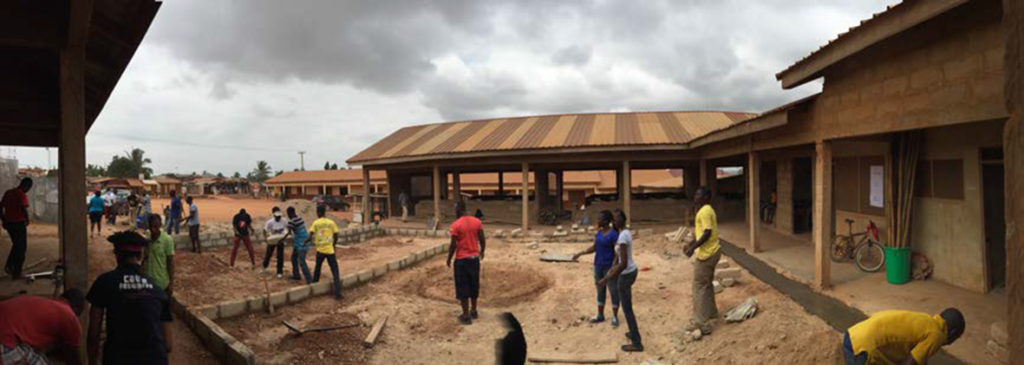Project Title: The Omanjor Reading Project
Location: Omanjor, Ghana
Author: Kuukuwa O. Manful
The Omanjor Reading Project by sociarchi – Kuukuwa O. ManfulInherent in the phrasing of the term social architecture is the idea of the social – of society, for society, by society. In Africa the concept of social architecture is simultaneously old and new, strange and familiar. On one hand, there is a long history – and indeed countless contemporary examples – of communities combining their labour and resources to construct buildings for common benefit. On the other hand, architecture in its ‘modern’, colonially-influenced professional manifestation in African countries is highly individualistic, usually expensive, capitalistic and generally inconsiderate of social impact. This puts architectural services out of the reach of the vast majority of citizens who cannot afford to hire professional architects, even though they are the ones who need it the most. This unmet need is the motivation for social architecture.
Despite these good intentions, however, social architecture faces numerous challenges such as the apparent ubiquity of NGOs and international development agencies who have used unsustainable development practices. For example, an NGO culture of distributing large amounts of free items without advocacy and sensitisation means that in initial stages, I am usually expected to ‘gift’ the social architectural intervention for ‘free’ in communities I engage with, and attempts to get community members to participate are usually met with disinterest and apathy.
In this article I discuss a temporary experimental social architecture project I undertook in Nkwantanang, a community in Accra – describing and explaining my processes, some challenges, and lessons learned. For social architecture to be impactful and sustainable, the social is key.
Text provided by the author(s).

